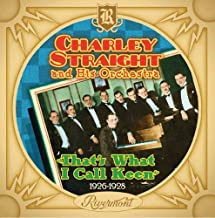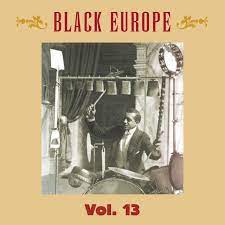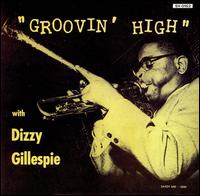
Daily Dose Of Jazz…
William Crickett Smith was born on February 8, 1881 in Emporia, Kansas, the child of Tennessee Exodusters. His professional career began in childhood, performing in Nathaniel Clark Smith’s Picaninny Band before moving into minstrel troupes, vaudeville and cabaret.
In 1913-1914, he made several early recordings with James Reese Europe’s group, the Clef Club Society Orchestra. Between 1914 and 1919, he performed in the Ford Dabney Orchestra, the resident band at Florenz Ziegfeld’s Broadway cabaret, Midnight Frolics. Between 1917-1919, they produced several dozen phonographs.
By 1919 Smith had relocated to Paris, France playing with Louis Mitchell’s Jazz Kings until 1924. The group recorded for Pathe Records. He became the leader of Mitchell’s group in 1923. He went on to tour France, Spain and Russia with his own bands from 1925 to 1933. However, during the Depression, he spent nine years in Southeast Asia, working with Herb Flemming, Leon Abbey, and Teddy Weatherford, mostly in Bombay and Batavia. In 1936, he recorded with a group called the Symphonians.
Around 1943 cornetist and trumpeter Crickett Smith, who played jazz blues and ragtime, returned to New York City and the following year transitioned on August 30, 1944.
More Posts: bandleader,cornet,history,instrumental,jazz,music,trumpet

Daily Dose Of Jazz…
Charles Theodore Straight was born on January 16, 1891 in Chicago, Illinois. He started his career in 1909 at 18 accompanying singer Gene Greene in Vaudeville. In 1916, he began working at the Imperial Piano Roll Company in Chicago, where he recorded dozens of piano rolls.
Becoming a popular bandleader around town during the Jazz Age, his band, the Charley Straight Orchestra, had a long term engagement at the Rendezvous Café from 1922 to 1925 and recorded for Paramount Records and Brunswick Records during the decade.
This period also saw Straight working with Roy Bargy on the latter’s eight Piano Syncopations. Besides working as a pianist or leading an orchestra, he also composed and arranged music, both ragtime and jazz.
Pianist, bandleader and composer Charley Straight transitioned on September 22, 1940 in Chicago after being struck by an automobile while working as a city sanitary inspector. He was emerging from a manhole in the street.
More Posts: arrangr,bandleader,composer,history,instrumental,jazz,music,piano

Daily Dose Of Jazz…
Merritt Brunies was born on December 25, 1895 into a well-known musical family in New Orleans, Louisiana. Among its members were trombonist George Brunies and cornetist Albert Brunies.
Merritt led his own band, The Original New Orleans Jazz Band, from 1916 to 1918. Though this ensemble never recorded, it existed before both Jimmy Durante’s New Orleans Jazz Band and the Original Dixieland Jazz Band. Following this, he formed another group which played at Friar’s Inn in Chicago, Illinois directly after the stint by the New Orleans Rhythm Kings.
He played regularly in New Orleans in the 1930s, however, by 1946 he moved to Mississippi. There he played with his brothers in a Dixieland jazz band until his retirement. Trombonist and cornetist Merritt Brunies transitioned on February 5, 1973 in Biloxi, Mississippi.
More Posts: bandleader,cornet,history,instrumental,jazz,music,trombone

Daily Dose Of Jazz…
Louis A. Mitchell was born December 17, 1885 in Philadelphia, Pennsylvania and began performing in vaudeville revues and minstrel shows from around the turn of the century, playing drums and bandoline. After a move to New York City in 1912, he founded his own group, the Southern Symphonists’ Quartet.
He sang and drummed for James Reese Europe in 1918, and the following year founded a new group, which he called Louis Mitchell’s Jazz Kings. By the end of the decade, Mitchell began touring the United States, as well as, Europe, concentrating on the United Kingdom and France. He did solo percussion shows in addition to ensemble programs, and his drum solos were greeted harshly by French audiences. Nevertheless, his ensemble spent five years as the house band of the Casino de Paris.
He recorded for Pathe Records in 1922 and 1923, with Sidney Bechet playing with him at this time, however, Bechet did not appear on the recordings. Louis remained in France until 1930, branching into restaurant and nightclub management in addition to music. He renamed one of his clubs Chez Florence due to the popularity of performer Florence Embry Jones.
Moving back to the United States in 1930 after the failure of The Plantation, his last club, but he played little in his last decades. Drummer and bandleader Louis Mitchell transitioned on September 12, 1957.
More Posts: bandleader,drums,history,instrumental,jazz,music

Daily Dose Of Jazz…
Alton “Slim” Moore was born October 7, 1908 in Selma, Alabama and began on baritone horn before settling on trombone by age 17. He played with local bandleaders and territory bands in his youth, such as Georgia Barlowe, Eddie Lemon, Gonzelle White, and Gene Coy.
Moving to New York City early in the Thirties he played with Jack Butler, Charlie Skeete, and Bobby Neal. Frequently switching ensembles in New York, in 1938 he did a short tour of Cuba with the Leon Gross Orchestra. Toward the end of the decade Moore moved up to play in more high-profile bands such as those of Fats Waller, Coleman Hawkins, Hot Lips Page, and Charlie Johnson. In the 1940s he played with Ella Fitzgerald, Benny Carter, Dizzy Gillespie and Louis Armstrong.
By the 1950s Slim had reduced his outings to part-time playing, after an extended stay in the band of Stafford “Pazuza” Simon. He would go on to play with Fletcher Henderson in 1957, and in the 1960s played in the Prince Hall Symphonic Band in New York as well as other big band revival outfits.
Trombonist Slim Moore, who also played and recorded on euphonium and did some scat singing, transitioned in 1978 in New York City.
More Posts: euphonium,history,instrumental,jazz,music,trombone





